A Guide to Successful Potting Soils for Salvias
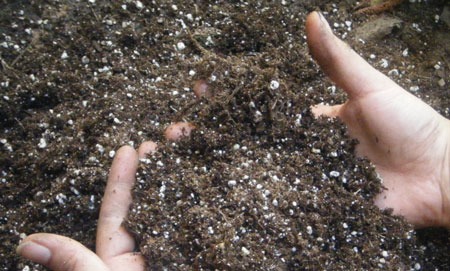
One of the decisions that gardeners face in spring is what kind of potting mix to use for outdoor container plants. It can be confusing, especially for new gardeners.
For Salvia lovers, one perplexing decision involves plant selection for container gardens. Resolving that issue is relatively easy when accessing the Flowers by the Sea website on a laptop or desktop computer. Each time you open a plant category in the menu of our online nursery catalog, such as Salvias A to Z, a list of product filters appears including the subcategory “container plant.” Also, the Details List on the opening page of a plant description notes whether it is suitable for container growing.
A more confusing question concerns the best potting soils to use for Salvia container gardens.
One of the first questions new gardeners raise is whether it’s okay to use regular soil in pots. The answer is almost always “no” although there are some organic potting mixes that include small quantities of garden soil. But soil from the ground compacts easily in containers, and this harms plants by decreasing the tiny spaces between soil particles through which water drains and roots access oxygen.
FBTS customers often ask us what kind of potting media to use for flowers in the Salvia genus — the 1,000-plus true sages. We say that it depends on the kind of sages you plan to grow and the types of mixes available at local garden centers and supermarkets — places where most people get potting soil.
That isn’t anywhere close to a sufficient answer, so we’ve created this guide — How to Select & Amend Salvia Potting Soils. It includes a broad range of information about potting mixes, including the purposes of particular components. The guide covers how to find a mix with good drainage — something crucial to success with Salvias — and how to amend mixes for sages that need either very little or a lot of water. And it touches on environmental concerns, such as local sourcing of soil mix ingredients and ways to recycle the material when it needs replacement. Let’s dig in.
All Salvias need good drainage so that moisture, whether ample or extremely limited, isn’t retained overlong. So, rule number one in container gardening is that when selecting pots, you need ones with drain holes in their bases.
Rule number two is to test your potting soil for drainage before planting in it. Fill a small pot with the mix, add water, and then observe how long it takes for the soil to become saturated and for excess water to drain. It may be that the potting mix is too porous or hydrophobic (water resistant) due to not containing enough absorbent materials.
Rule number three is to perform the squeeze test with a bare hand after the excess water flows out. After the potting mix is saturated, compress a handful to feel whether it crumbles (good) or turns into a squishy lump (bad).
As you go through this process, keep in mind that some sages — such as ones native to arid settings — need minimal watering and rapid or “sharp” drainage. At the other end of the spectrum, you’ll find certain woodland riverbank species — such as Anise Scented Sage (Salvia guaranitica) — that tolerate lots of moisture and slower drainage.
The page that opens when you click on the Cultural Icons Tab for each plant description in our online catalog indicates how much supplemental watering the plant needs. This may affect what potting mix you choose. The watering categories are:
- Drought Resistant, which describes a plant requiring little to no supplemental watering once roots are established. FBTS Blue Tag plants fit into this category and are good choices for dry gardens.
- Average, which denotes a plant that performs best with regular supplemental watering. Yet some of these sages tolerate dry conditions and are also drought resistant. Similarly, some average-water plants are listed as handling “average to ample” water conditions.
- Water Loving or Moisture Loving, which specifies that a plant needs lots of H2O, such as Pink Makino (Salvia glabrescens ‘Momobana’) — an Asian sage native to shady environments.
Soil is a complex mix of organic and inorganic matter as well as living organisms that may be beneficial (for example, earthworms) or harmful (like disease-causing bacteria) to plants. Its organic matter includes composted plant materials, such as leaves, and animal manure. The inorganic components in soil are sand, silt, and clay from erosion of various kinds of rock.
In contrast, potting soils are manufactured mixes that are often referred to as being “soilless.”
Garden soils drain poorly in containers. Drainage of plants grown in the ground is aided by capillary action, a process that draws excess moisture downward. Planters have limited depth, so they reduce capillary action. This causes regular garden soil to compact and stress plant roots if used in containers.
Potting mixes are called soilless because they aren’t made of regular soil and are free of pathogens, insects, and weed seed. However, they do contain certain components often found in or added to garden soil, such as organic and mineral matter. These components aid the potting soil’s ability to hold and release moisture and to stimulate uptake of nutrients by roots.
- Sphagnum Peat Moss is the new growth atop peat bogs and is mostly free of weeds, insects, and disease-causing organisms. It’s pulverized for use in potting soil after being dried. In potting soil, its primary purpose is to aerate and lighten the mix and to hold moisture. Some potting mixes use a product called “peat moss,” which is made from the compressed, dead material beneath the Sphagnum layer. Peat has an extremely acidic pH (3.5 to 4.0) versus Sphagnum’s nearly neutral pH. Neutral or balanced soil chemistry is 7.0 on the pH scale which stretches from 1 to 14. Soil acidity increases as pH drops below that midpoint. Alkalinity (as in desert soils) increases as pH rises over 7.0. Nutrient uptake, such as from fertilizer or compost, improves when pH is close to being neutral. Mixes heavy on peat, versus Sphagnum, need limestone to amend pH.
- Coir Coconut is ground-up coconut husk fiber that aerates, holds water, and lightens potting soil similar to Sphagnum peat moss. Coir’s pH ranges from 5.5 to 6.8. Both Sphagnum and coir degrade slowly, so they retain their loft and keep potting mix stable. Although coir is easy to rewet, Sphagnum and peat become hydrophobic if not regularly watered. If you have a tendency to forget to water container plantings, you may be better off with a coir-based mix.
- Fertilizer contains basic nutrients flowering plants need, such as nitrogen (N), phosphorous (P), and potassium (K). It isn’t always added to potting mix. Check the ingredients of the kind you purchase to see if fertilizer is present. At FBTS, all the plantings we ship contain fertilizer. Some low-fertility types, such as desert Salvias, need weaker, less frequent applications of fertilizer. But plants that prefer rich soils may need full-strength doses once a week if their potting soil contains no fertilizer. Plant descriptions in the FBTS catalog that state a need for rich soil are indicating that these species require regular fertilization and extra compost.
- Finished Compost is a mixture of plant organic materials, like forest products and leaf mulch, which have decayed into a fine soil-like consistency. Compost loosens potting soil and adds a limited amount of nutrients to the mix. Its major role is to aid roots in nutrient uptake.
- Fir or Pine Bark is mostly added as finished compost, but you may find small chunks in your mix as evidence of their presence.
- Perlite is volcanic rock transformed through a heating and crushing process into fine, white bits. It aids drainage and aeration as well as protecting roots against sudden changes in temperature.
- Vermiculite, which comes from a silicate rock similar to mica, also provides aeration and drainage. But it holds water and nutrients better than perlite. If you plan on potting a low water, low fertility desert Salvia, a soil mix containing perlite may be a better choice than one with vermiculite.
- Builders Sand is a coarse, gritty rock product that provides soil aeration. Finer grades of sand harden soil into a concrete-like material.
- Calcined Clay is basically kitty litter. It’s an odorless, heat-treated, crumbled clay that aerates potting mixes and absorbs moisture without lumping together.
- Limestone helps to balance the pH of potting soil. It offsets the acidity of materials, such as peat moss and forest products including bark and sawdust.
- Nutrient Enhancements — which include bone meal, bat guano, earthworm castings, kelp meal, and rock phosphate (aka phosphorite) — are substituted for chemical fertilizer in organic potting mixes.
- Mycorrhizal Fungi is a complex group of beneficial biological organisms that increase the ability of plant roots to absorb nutrients.
- Rice Hulls are the outer chaff of rice. They loosen and lighten potting mix and are a sustainable replacement for Sphagnum, coir, perlite, and vermiculite.
- Styrofoam is something to avoid in potting mixes where it sometimes replaces perlite. It’s a questionable ingredient due to absorbing water poorly, compacting, and drifting to the top of containers instead of staying suspended in the soil.
- Wetting Agent is a chemical or organic material that decreases the surface tension of water so moisture spreads evenly in potting soil. Unfortunately, if a mix contains too much wetting agent, it may suffocate roots.
Although garden centers sell national brands of potting soil, many also offer regional mixes that include materials sourced nearby and are related to the chemical structure of local water. From region to region, significant differences may exist between these mixes.
For example, the kinds of pine and fir bark used in mixes vary based on what is locally available. By resourcing soil mix components locally, manufacturers save money on transportation. A more exotic example of local sourcing is the “mastodon peat” from a Colorado Rockies archeological excavation site that a southwestern Colorado company includes in one of its coir-based potting mixes.
The U.S. Department of Agriculture doesn’t regulate the labeling of potting soil. Consequently, ingredient lists on these mixes often lack detail. But if you were to read closely the ingredient list on one major national brand, you’d notice an important regional difference between its New Hampshire potting soil and mixes for other states. The New Hampshire product contains Sphagnum peat moss but not peat. Why? We don’t know except that maybe Sphagnum is more plentiful in the New Hampshire area. It's definitely a better choice for balanced pH.
Despite being native to a wide variety of countries and growing conditions, many Salvias are adaptable to standard mixes made up of the ingredients listed above.
Moisture-loving species also often thrive with rich soil. If that’s what our catalog notes for a Salvia or companion plant you intend to buy, make sure your potting mix contains fertilizer. Provide supplemental feeding by placing slow-release fertilizer beads on top of the potting mix or including soluble fertilizer in a regular watering one day a week.
Before potting a water-loving plant, you can also add extra compost to the mix at a ratio of about one-fourth compost to three-fourths potting soil. You may also want to boost water retention with a scoop of vermiculite.
Salvias at the other end of the water and fertility spectrum, such as FBTS Blue Tag Xeric Plants, need a more mineral-based soil. To our knowledge, there is no commercial mix that combines regular potting soil with a sharp-drainage, high-mineral material like a commercial cactus-and-succulent mix.
Instead of purchasing a full array of materials to make your own potting soil for super low water Salvias, try combining one-third cactus-and-succulent mix, with one-third standard potting mix, and one-third crushed lava rock (red scoria).
The most important rule to remember when container planting is to never put a small Salvia in a large container. Start small and size up as the plant becomes larger and well-rooted. Too much soil can lead to sogginess instead of the well-drained condition sages love. It’s a problem discussed in this article on Selecting and Arranging Pots.
The timing for sizing up depends on how rapidly a sage grows. All FBTS plants are shipped in 3.5-inch pots. A fast grower like Rhythm and Blues Anise-Scented Sage (Salvia BODACIOUS ‘Rhythm and Blues’) might be ready for a 7- to 8-inch pot (a gallon container) in about a week. Here is a helpful FBTS video about how to prepare a Salvia for repotting when its pot becomes too small for its roots (a condition called "rootbound").
Two last thoughts about the potting process: First, don’t pack soil into a container. It should be loose and airy. Second, stop filling a pot about 1-inch below its lip so the soil doesn’t overflow when watered.
One environmental issue gardeners face when choosing potting soil is the sustainability of potting soil materials. For example, although there are peatlands from the tropics to the arctic, they cover only 3 to 5 percent of Earth’s surface and take about 1,000 years to form.
Consequently, more potting soil manufacturers are exploring the use of coir and rice hulls to replace peat products. Of course, transportation is also an environmental concern regarding coir, which is produced in the Caribbean, Mexico, South America, India, Indonesia, the Philippines, and Sri Lanka.
Considering these supply issues, an environmentally friendly choice is to recycle worn-out potting soil by using it as mulch or adding it to compost heaps. Avoid reusing it in pots even if you plan on topping it with fresh mix. This can lead to disappointing plant growth.
Throughout the year, keep potting soil sealed in containers (the original bags, new garbage bags, or sanitized trash cans) and store it in dry locations like a carport, garage, or shed. Aside from soggy glop, open bags unprotected from the elements also lead to contamination by insect eggs, pathogens, and weed seeds.
Over summer, we all fall desperately in love with at least a few of our potted plants. Come autumn frosts, it’s difficult to watch them die. The solution for saving favorite perennials with roots that can’t handle freezing temperatures is to overwinter them indoors. If you’d like to learn how to do it, we recommend reading Quick Digs: Wintering Over Salvias Indoors.
You'll also find information about growing Salvias and companion plants in pots in the Container Gardening section of our Everything Salvias Blog. Please feel free to contact us at FBTS Farm and Online Nursery for any questions you may have about our plants or to share your experiences with container growing of sages. We would particularly appreciate comments here about what kinds of potting soils are working for you.
Photo Credits: Hands in Potting Soil, M Tullotes, public domain; Perlite Boulders, RG Johnson, National Park Service, public domain; Rice Chaffs(hulls), GNU free documentation license; Ponderosa Pine, Walter Siegmund, GNU free documentation license; Sphagnum Peat Moss, Ragesoss, GNU free documentation license; Anthophyllite Vermiculite, Leon Hupperichs, CC Attribution Share Alike 3.0.

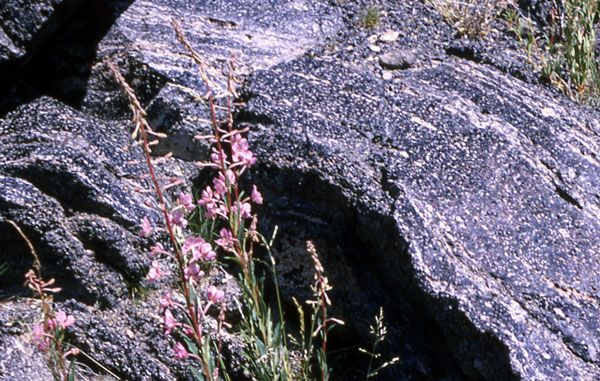
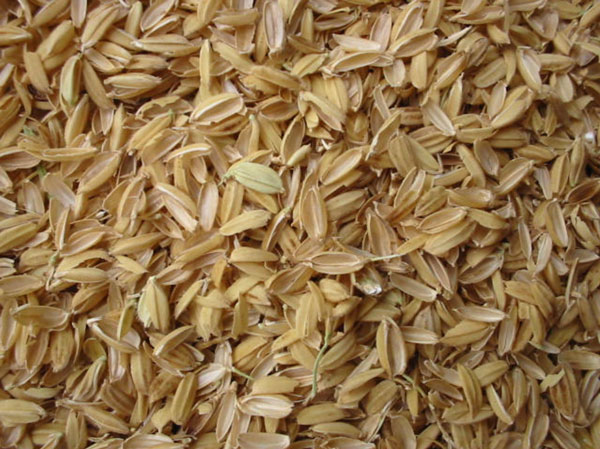
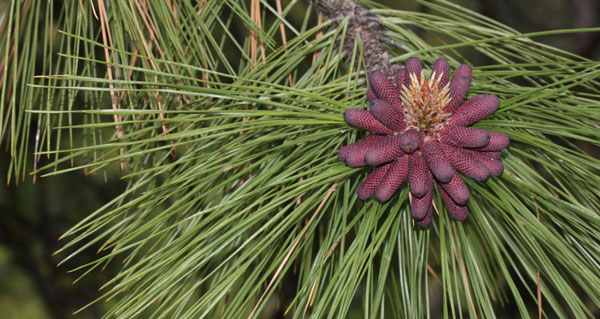
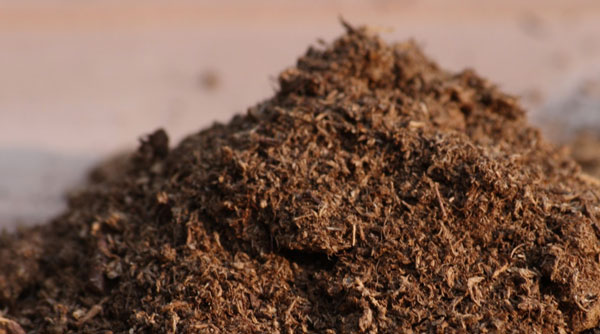
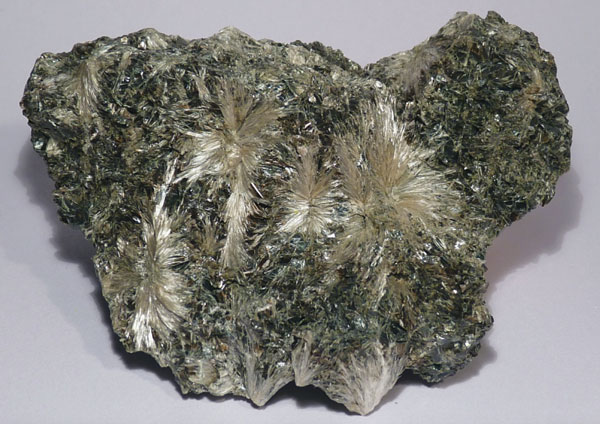
3 Comments
Type your comment here